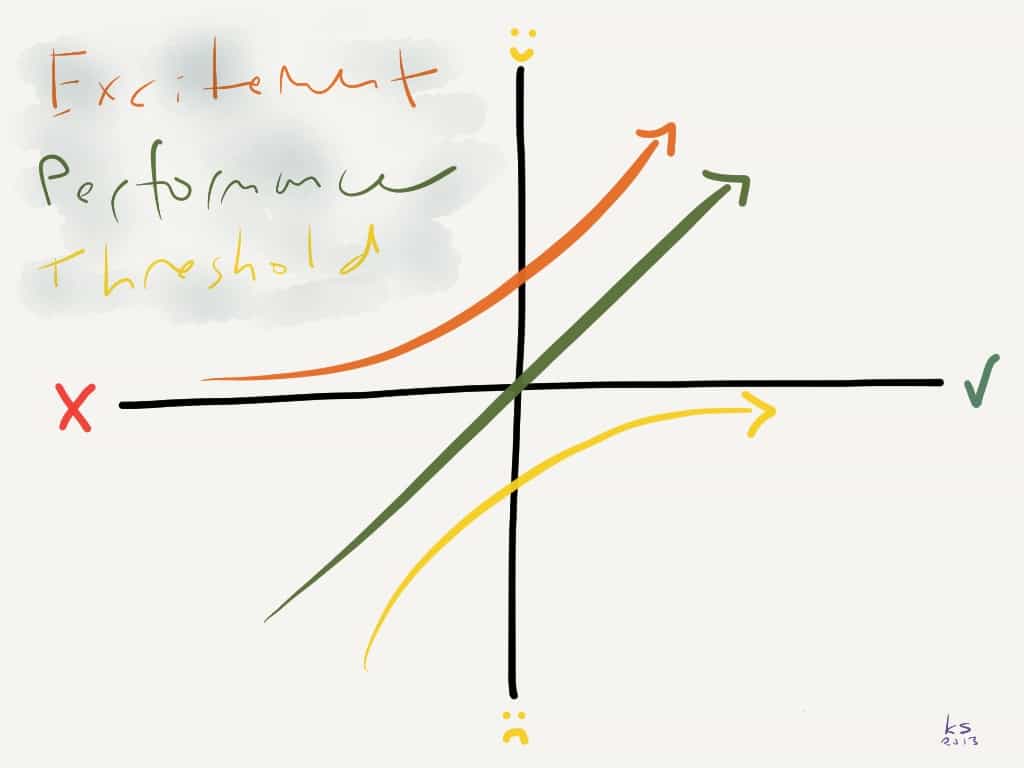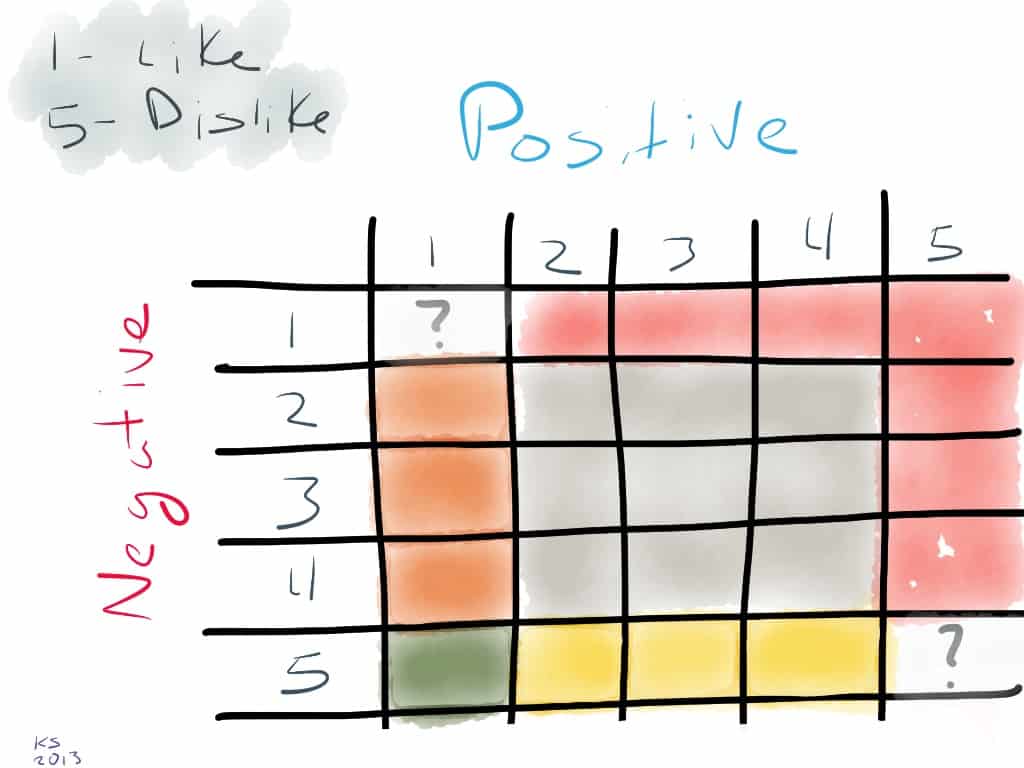Every product maker that I know wants to create products that delight their customers, yet not every product does this. Why? Products are often less than delightful for a number of reasons, but a common one is that the product simply doesn’t do the necessary things to meet a particular person’s expectations. One way to attempt to solve this issue is to build as many features as you can, hoping that one sticks and results in satisfied customers. Another approach is to prioritize features based on the expected impact on customer satisfaction.
Contents
Features & Customer Satisfaction
Intuitively, we know that each feature has a different impact on customer satisfaction, but often we do not put this intuition into practice — again, falling back to a build everything approach. It is often helpful to have a framework or model for how to guide our thinking and practice. The Kano model provides one way of thinking about features and their associated impact on customer satisfaction.
The Kano model, developed in the 1980s by Professor Noriaki Kano, assumes that not all features affect customer satisfaction equally and models the differing impacts by categorizing features into one of three main buckets: threshold, performance, and excitement. Before defining each of the categories, it is helpful to look at the graph of the Kano model. The y axis is customer satisfaction, and the x axis is feature implementation.

Threshold
Threshold features are the baseline features of a product. From a customer’s perspective, they are either present or not and have a binary effect on satisfaction. Consider a toilet: would you say that a bathroom is complete without one? Probably not. You’d be mighty disappointed to find a bathroom without a toilet; the bathroom would not be viable as a bathroom.
Performance
Performance features are ones that a customer will be increasingly satisfied the better you implement them. These are the features that can have a metric next to them: battery life, download speed, megapixels, storage space, etc. Competitors often fight fiercely over these features.
Excitement
Excitement features are, well, the most exciting features as a product maker. They delight a customer in an unexpected way; customers would have zero negative impact to their satisfaction if excitement features are absent. But, these are often what make a product unique from its competitors and contribute 100% to positive customer satisfaction. Remember smartphones before multitouch? Laptops before solid state drives?
Trend of Feature Categories
One interesting aspect of the Kano model is that features that are excitement today tend to drift down to becoming threshold features. Multitouch screens in smartphones are an example of this trend. When the iPhone launched, this was absolutely an excitement feature; now, it is a threshold feature of a cell phone (or arguably a performance feature for some customers).
Categorizing Features
You might be wondering if there is a method for figuring out which category a particular feature belongs to. One way is to use your product instinct and expertise of the problem you’re solving to put features into different categories; however, if you have access to potential or existing customers, another way is to ask people the following two questions for each potential feature, one for positive emotion and one for negative:
- If the product can do X, how do you feel?
- If the product cannot do X, how do you feel?
The possible answers to each question are:
- I like it
- I expect it
- I am neutral
- I can tolerate it
- I dislike it
Based on the responses, a simple table can be produced that helps categorize the features:

The orange, green, and yellow match with excitement, performance, and threshold respectively; the grey area represents features that a customer is indifferent about, and the red area represents features that would contribute to the customer’s dissatisfaction if implemented (stay away from these!). The question mark cells represent an undeterminable result from the responses.
Prioritizing Features
Now that you have your features categorized, you have a framework for thinking about how to prioritize those features.
- You must fully implement your product’s threshold features. Deciding to drop any means that you are willing to accept that certain customers will not find your product satisfactory. Some products have a long list of threshold features. When faced with this, it might be better to slice off a cohesive subset that is interesting to at least some of your target customer demographic for version 1.0 (or try an early access program which can allow you to re-categorize features based on feedback).
- Each performance feature should be implemented as fully as makes sense. Time is money, so you probably cannot implement them all to their fullest. A simple rule is to ensure you are at least as good as your nearest competitors for these features, unless you have other features that are exceedingly attractive.
- Hopefully you have some excitement features! Absolutely leave room in your roadmap to implement some; these are what make your product uniquely delightful to your customers.
Go, Make
Why care about prioritizing customer satisfaction? Satisfied customers are happy customers, and happy customers are loyal customers. Loyal customers are the lifeblood of any successful product. The Kano model is not a foolproof method but is a simple tool for helping build more satisfying products.
Go, make your customers happy.








Great article, but I think excitement features can in some cases be negative. Everyone who remembers the “helpful paperclip” in MS Office can attest to this.
Great point, but it’s important to remember that excitement features aren’t exciting in the eyes of the creator, they’re exciting in the eyes of the customer, especially with extended use. They differentiate the product in a positive way.
I’m not sure that many people were delighted by Clippy because of the fact that he presented that he’d interact with you like a person, but then was unable to do so. He was also just kind of visually annoying.